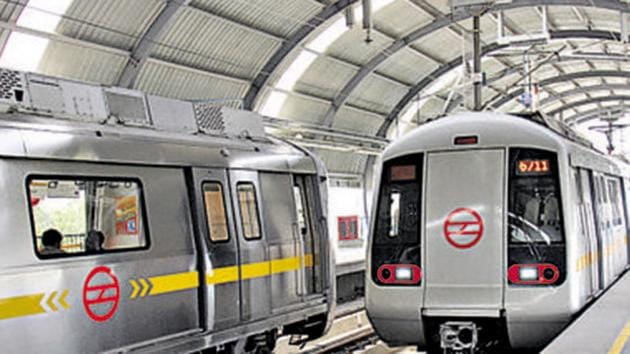Why metro rail expansion and new flyovers won’t decongest Delhi
The Delhi Metro is about 218Km long and carries about 28 lakh passengers per day. But buses in Delhi carry around 50 lakh passengers per day.
In Delhi, there is nothing called ‘peak hour’ traffic congestion anymore. This is because no matter what time of the day you travel on the city’s roads, they are always bursting at the seams. Other than wastage of time of commuters, stagnant traffic and bad quality of roads also means wastage of fuel.

According to an ongoing research by the Council of Scientific and Industrial Research-Central Road Research Institute on how much fuel is wasted because of potholed roads and bad traffic, vehicles travelling on “average”, crowded roads consume nearly one-and-a-half times more fuel per kilometre compared to “good”, fuel-efficient roads.
It found that an SUV consumed about 40.25 millilitres of fuel per kilometre when it travelled on the Noida Expressway, considered a good and fuel-efficient road. The same vehicle consumed about 95.5 millilitres of fuel for every kilometre when travelling from Noida Expressway to Kalindi Kunj and onto Jasola.
A preliminary estimate puts the wastage across India at ₹960 crore a day. Although the extra expense incurred by an individual driver might not ring alarm bells, the cumulative wastage would be an added burden on India’s oil import bill.
How can Delhi be decongested?
Over the years, Delhi has expanded exponentially.
It has also developed as a seamless city with an urban continuum comprising a number of rapidly growing towns in Haryana and Uttar Pradesh. This has added to the flow and movement of traffic within Delhi.
To respond to the increasing pressure on roads, the government has gone for the obvious measures: Increasing the length of the road network and road surface space through widening, construction of a number of flyovers / grade separators and, launching of the Metro.
Yet the traffic congestion has continued unabated.
This only goes on to show that expanding the Delhi Metro and hoping that it will decongest the city is not the right antidote for decongestion.
This is because building a metro system is not just a time-consuming affair but is also expensive.
If we have to decongest the city, then first option should be to roll out more buses on the roads.
But according to a report in HT, the Delhi Transport Corporation is going to be history by 2025 if new buses are not inducted to its fleet. The corporation is in a major fix as 99% buses of its existing fleet of 3,951 will have to be taken off roads in a span of over five years. This is because its entire fleet is ageing as the operational life of a bus is 12 years or 7.5 lakh km, whichever is later.
Here’s a piece of statistic to show why we are batting for buses: The Delhi Metro is currently about 218 km long with another 240 Km under various stages of construction in the Capital and carries about 28 lakh passengers per day. Buses in Delhi carry around 50 lakh passengers per day.
The larger point being that the only way to decongest is invest heavily in public transport.
According to the Report of The High-Powered Committee on Decongesting Traffic in Delhi, which was set up after Hindustan Times’ campaign to decongest the city’s roads, says public transport, currently, carries more than one crore people daily (bus and metro) while cars carry just about 20% of that.
Yet, a lot of public funding is currently directed towards car-oriented infrastructure, such as road widening, flyovers, foot-overbridges and underpasses.
CROSS-BORDER CONGESTION
The Capital’s satellite cities --- Ghaziabad, Gurgaon and Noida --- also has an acute public transport problem, forcing people to rely on own transport, autorickshaws, jam-packed and unpunctual buses and cycle-rickshaws for intra-city movement.
When Noida and Gurgaon got their Metro rail connectivity, the locals thought it would end their travel miseries. It has certainly provided a comfortable connectivity but still the issue of last-mile connectivity remains unaddressed.
@kumkumdasgupta






